Book review: Tess of the Road by Rachel Hartman
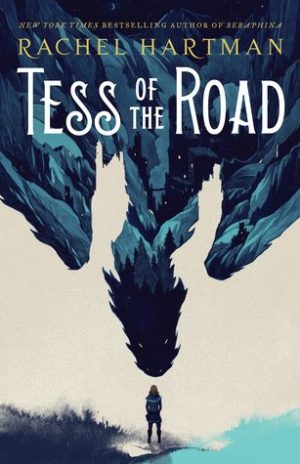
Tess of the Road by Rachel Hartman is a deeply affecting young adult novel that is part coming-of-age and part episodic road trip. It focuses on the eponymous Tess, a young woman who runs away from home to escape the restrictive life that is slowly smothering her. Rachel Hartman is best known for her Seraphina duology. Tess of the Road is not only set in the same world, but Tess is Seraphina’s half sister. New readers don’t need to have read the previous series in order to read this book; it makes clear how the world works. However, Tess of the Road takes place after the events of Seraphina and Shadow Scale. Several of the characters from these books make cameos and I highly recommend reading them first if you are adverse to spoilers.
Book Review: THE ART OF STARVING by Sam J. Miller
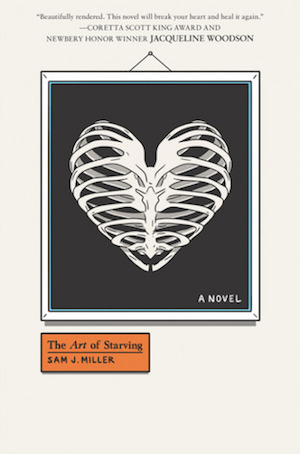
A few years back I quickly fell in love with the short fiction of Sam J. Miller. Published across a spectrum of electronic genre venues (Shimmer, Apex, Lightspeed, Nightmare, Clarkesworld, Uncanny), Miller also gained recognition in print with “Calved”, originally published in Asimov’s Science Fiction and reprinted in multiple ‘Year’s Best’ anthologies. I’m drawn to Miller’s fiction for several reasons that tie together. Foremost are his characters: strong and unique voices that reflect points of views not frequently explored in genre fiction. Even though these characters may often be very different from myself – with conditions or experiences I’ve never faced – Miller excels at making them universally relatable. His themes focus on the strengths and weaknesses of their basic humanity. Beautiful mixtures of fragility and fortitude, Miller’s characters compel reader empathy and emotion, even if the character’s specific situation is personally unfamiliar to the reader. This character-driven realism gives Miller’s insightful explorations a mainstream, literary tone. Yet, Miller’s stories are firmly in the genre camp. It is this deft balance between literary realism and the uncanny or speculation of SciFi/Fantasy/Horror that I enjoy so much.
Book Review: Horizon by Fran Wilde
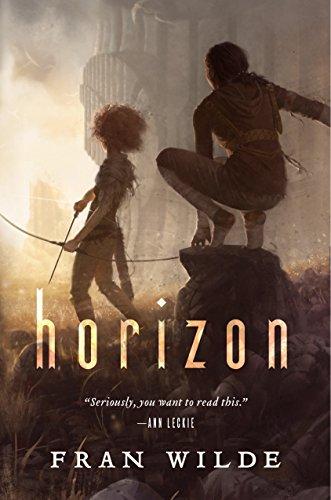
The Compton Crook award-winning, Nebula-nominated Updraft by Fran Wilde landed her acclaim, accolades and a very fine YA novel to start the novel portion of her writing career. Focusing on a New Weird world above the cloud of flyers, skymouths and towers of bone, Updraft was one of the most memorable books I read in 2015. Cloudbound, which came out in 2016, took the world of the Bone Towers and its characters in new and intriguing directions. Somewhere in there, the series got a reboot of covers, too. Now, with Horizon, Fran Wilde completes the trilogy. After the revelations of Cloudbound, and the instability that the Bone Tower society has undergone after the events of Updraft, Horizon brings us to the ground, literally and figuratively, in this concluding volume. The three novels of the Bone Towers Trilogy have all done different things, and done them well. Updraft is a classic YA coming of age story with a strong central protagonist, unfolding and unfurling the wings of the author’s worldbuilding even as we have a deep dive into the personality, hopes, fears, dreams and struggles of Kirit. It would have been the easier, safer and perhaps more expected path for the author to continue the trilogy from Kirit’s point of view and go for a grand arc of Kirit’s story at the time of great change for her community. Surely, I think, the author must have considered and contemplated that sort of path for her subsequent novels.
SEA Quest: A SG Writer's Thoughts about ASEAN Lit

SFF in ASEAN Writing Who am I? I write science fiction (mostly) and YA. And things in between. What draws me to science fiction and YA? I like the genre. Science fiction is a genre. YA is the target audience, not a genre. I like science fiction because you can imagine worlds. You can write about werewolves in space and fantastic space battles. It’s basically what-ifs and futures and what kind of futures you want to see. Science fiction is visionary; it opens eyes and broadens horizons. It makes you think. It makes you travel through space and time. It has enormous potential for change. YA? I teach and I like teaching. My students happen to fall within this category. It talks about an interesting and not-so-easy time: the teenage years.
Book Review: Buried Heart by Kate Elliott
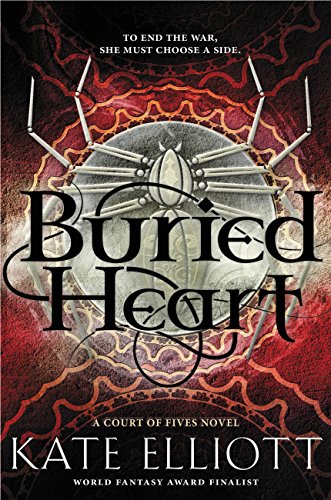
All good things must come to an end, and with Buried Heart, author Kate Elliott brings to a conclusion the YA Court of Fives trilogy. Talking about plot developments in the third and final volume of a trilogy is difficult and perhaps foolish to try, so I will instead discuss the essential theme of this volume, one that has been slowly surfacing through Court of Fives and Poisoned Blade, but here gets its full fulminating flowering: Revolution. In Buried Heart, Efea’s oppressed status, something that the author has been delineating from the very first chapter of Court of Fives, comes out in full force. Of course within the potential revolution of Efea against the tyranny that holds it is the struggle of powers around it, and the struggles of the current royal occupants to hold the throne against kin and family. The first two novels, which suggested that Jessamy, the Spider, would be subsumed into that dynamic entirely, prove to have been a false flag. In the third volume, Jess finds herself caught between father and mother, her lover and her land, and must make often difficult choices as the people of Efea struggle to reclaim their freedom.
Book Reviews: Martian Girls, Home and Abroad
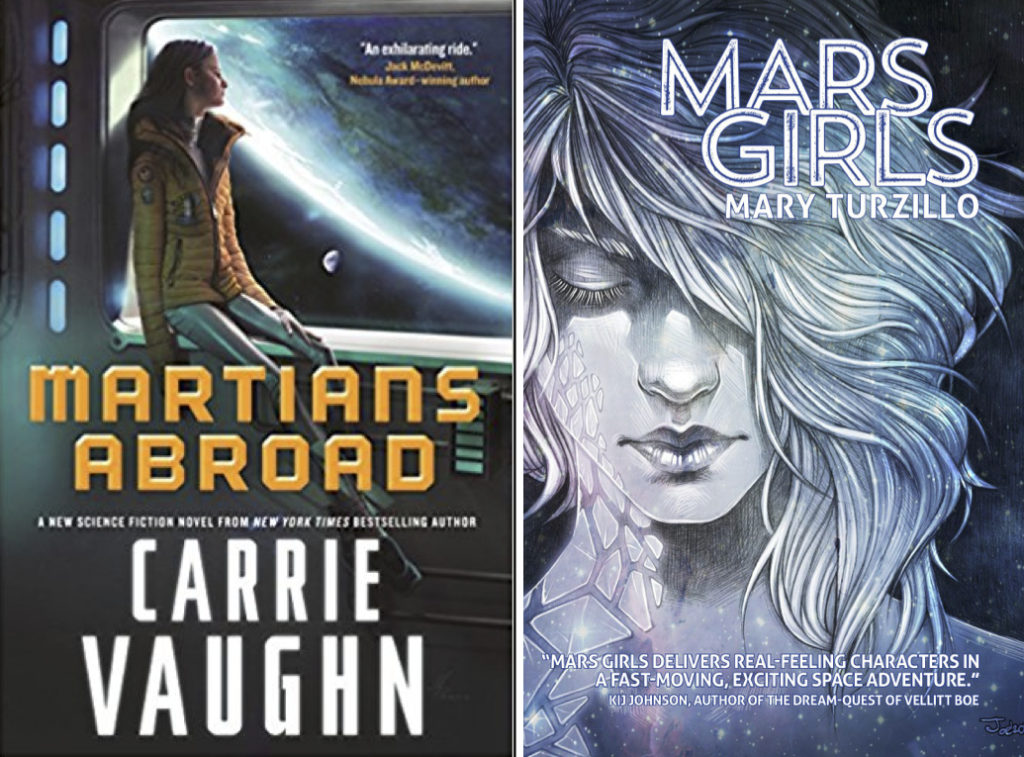
Martians Abroad by Carrie Vaughn & Mars Girls by Mary Turzillo Two young adult (YA) novels featuring feisty teen heroines from Mars recently landed in my to-be-read pile. Beyond the surface similarity between their protagonists, the two novels diverge completely, each with unique focus and drive, and different kinds of success. Newly out in trade paperback from Tor, Martians Abroad by Carrie Vaughn is the simpler of the two, written with familiar themes (adversity-conquering intellect, exceptionalism) that recall YA science fiction adventures from ‘Golden Age’ writers like Heinlein. The plot of this stand-alone novel from Vaughn is even more broadly recognizable as a typical coming-of-age setup. A teen leaves the familiarity of home to enter an institution populated by antagonistic peers and aloof adults. The ridiculed outcast slowly proves the utility of her or his outsider perspective/experience, showing-up the cliques and saving the day.

